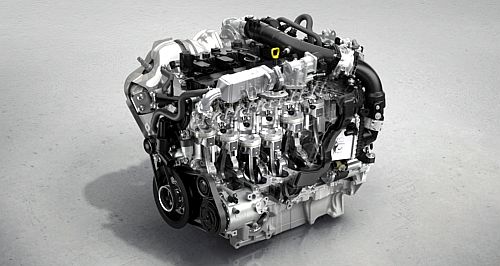News - MazdaMazda not just about petrol and dieselALL IN: Petrol, diesel, mild-hybrid, plug-in hybrid and EV models will form the basis of model ranges, Mazda says. Fuel efficiency standards will push brands to adapt with electrification – and infrastructure must keep up17 Aug 2023 MAZDA Australia is “patiently waiting” for any decision from the federal government to implement a fuel efficiency standard, which would effectively force manufacturers to reconsider their vehicle model range in order to meet targets for efficiency and emissions.
Similar standards are in place in many other parts of the world, but in Australia, no such position has been taken by the bureaucracy to date.
A consultation paper from the department of infrastructure was published in April 2023, with the document outlining that a push for a fuel efficiency standard (or FES) may still mean that new-car buyers would have a range of choices, but that those choices would need to be more efficient than vehicles currently available.
“With a fuel efficiency standard in place, Australians can expect to continue to access the same types of vehicles they do currently, from hatches to four-wheel drives, utes to vans and everything in between,” the report states.
“But they will also get the choice of more efficient petrol and diesel engines, more hybrids, plug-in hybrids and battery EV options available for sale. Not only will a fuel efficiency standard deliver more advanced and affordable vehicles into Australia, it will also drive down our emissions.”
Mazda Australia managing director, Vinesh Bhindi, said the brand – and many other OEMs – are waiting with bated breath to see what happens when it comes to actioning any FES plan.
“We are all patiently waiting (to see) what happens next. But I believe there will be a fuel efficiency standard for CO2, and I think we need one, we must have one, it's the right thing to do, as it'll allow a transition,” he said.
“Even in that transition, I believe consumers will consider options – so, some consumers, early adopters are already heading that way,” he said of the shift towards electric or electrified models, calling out the fact that EV sales have shot up to account for around eight per cent of total vehicle registrations in Australia so far in 2023.
“Then there's that middle ground to say, when is the right time for that consumer? And I think they'll work that out. But then there'll also be a certain level of consumers who will say, ‘I don't have access to the infrastructure that is allowing others to operate a full battery electric’,” he continued.
“Now, whether they're isolated customers living in regional parts of Australia, or it'll be simple as it's not fit for purpose… it means the auto industry has to cater for as many (customers as possible),” he said, before going to on to state that in Mazda Australia’s case, “if there's an opportunity, we will offer as many technologies as possible.”
Indeed, Mazda does have a diverse range of powertrain choices already. The company offers non-turbocharged petrol engines in its more affordable models, turbo-petrol and turbo-diesel versions of some SUVs, mild-hybrid petrol, turbo-petrol and turbo-diesel engines, plug-in hybrid tech in the new CX-60, and the fully-electric MX-30.
Mr Bhindi said there is a broader discussion that needs to take place as well around the incentivisation for adopting more eco-focused powertrains, and the infrastructure that needs to be in place to service the requirements of those who move to electric vehicles.
“My view is that infrastructure is priority number one over incentives; because incentives are temporary. It doesn't help resale values, it's complex and we've seen with state governments it (can be) pulled overnight,” he explained.
“Incentives have got a role to play, but it's after infrastructure. People… just need confidence and understanding of what this technology is and how it will work. At the moment, it appears for (some) people… it's the unknown. It's the fear.
“But all of this will improve over time. Technology will improve, coverage will improve. It's where we eventually will end up. But it can't happen overnight.”
Mazda has only recently introduced its first plug-in hybrid model in Australia, with the CX-60 PHEV model attracting more than half of sales enquiries – no doubt spurred on by generous fringe-benefits tax incentives for customers.
There is a plug-in hybrid version of the new, larger CX-90 three-row SUV, which is also coming to Australia. But it won’t arrive until late 2024, due to that model having been developed primarily for the North American market.
Mazda offers just one electric model at this state – the eternally unpopular MX-30 – which has sold just 375 units in 2023 (and that includes the petrol mild-hybrid version).  Read more14th of August 2023  Mazda won’t abandon affordable modelsPremium push won’t push cheaper Mazdas out, says Mazda Australia boss14th of August 2023  Long wait for Mazda CX-90 PHEVHomologation hurdles mean PHEV variants of Mazda CX-90 won’t arrive until late 202418th of July 2023  Mazda CX-60 redefines rightsizingNew six-cylinder engines, rear-wheel drive help reformulate Mazda’s premium range18th of July 2023  Mazda sales go from strength to strengthSUV and LCV models set records across the closing months of the 2022-23 financial year |
Click to shareMazda articlesResearch Mazda Motor industry news |
















Facebook Twitter Instagram